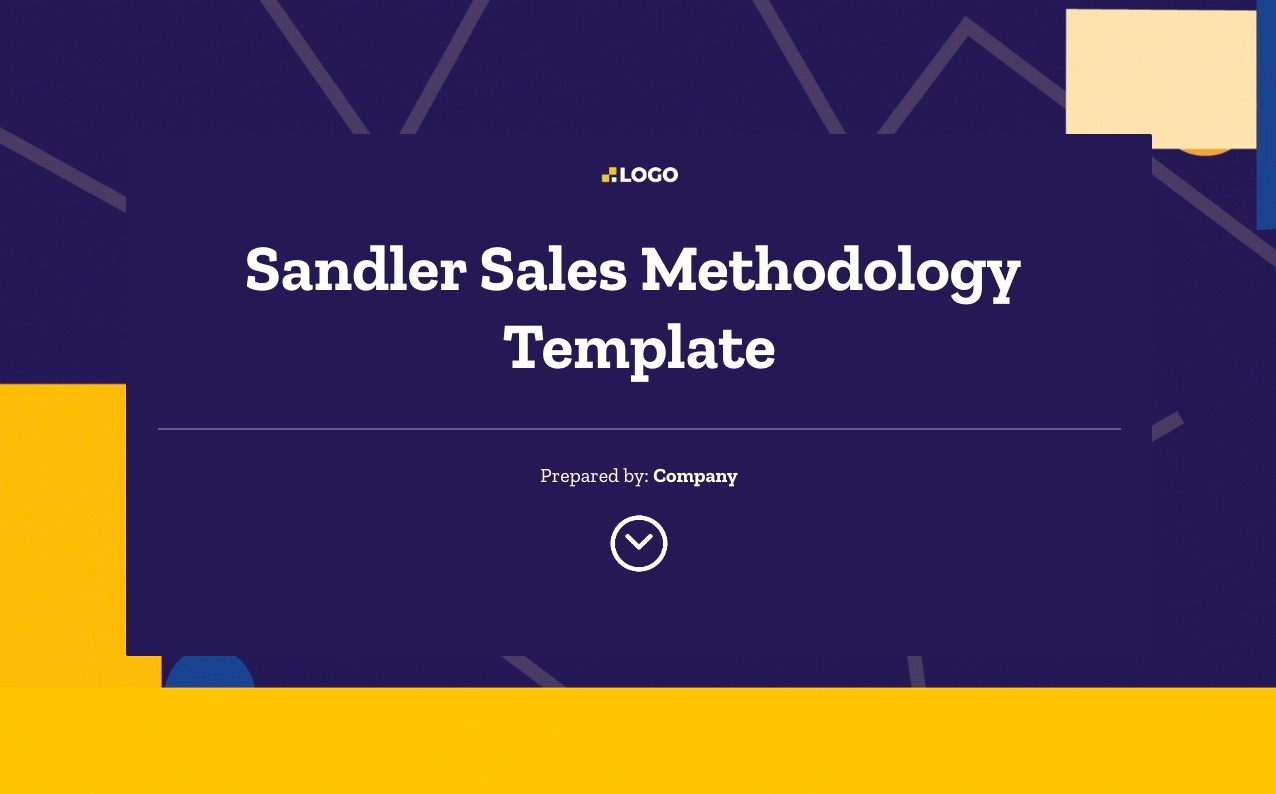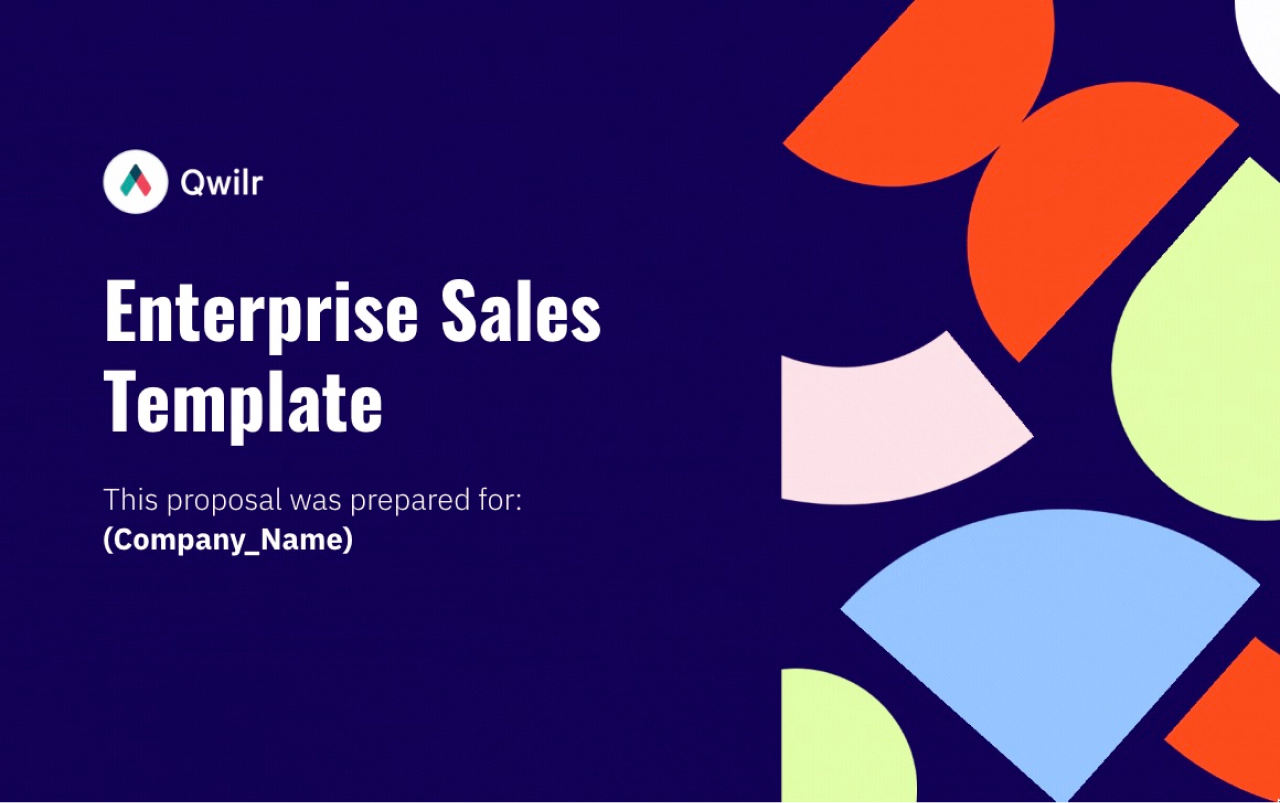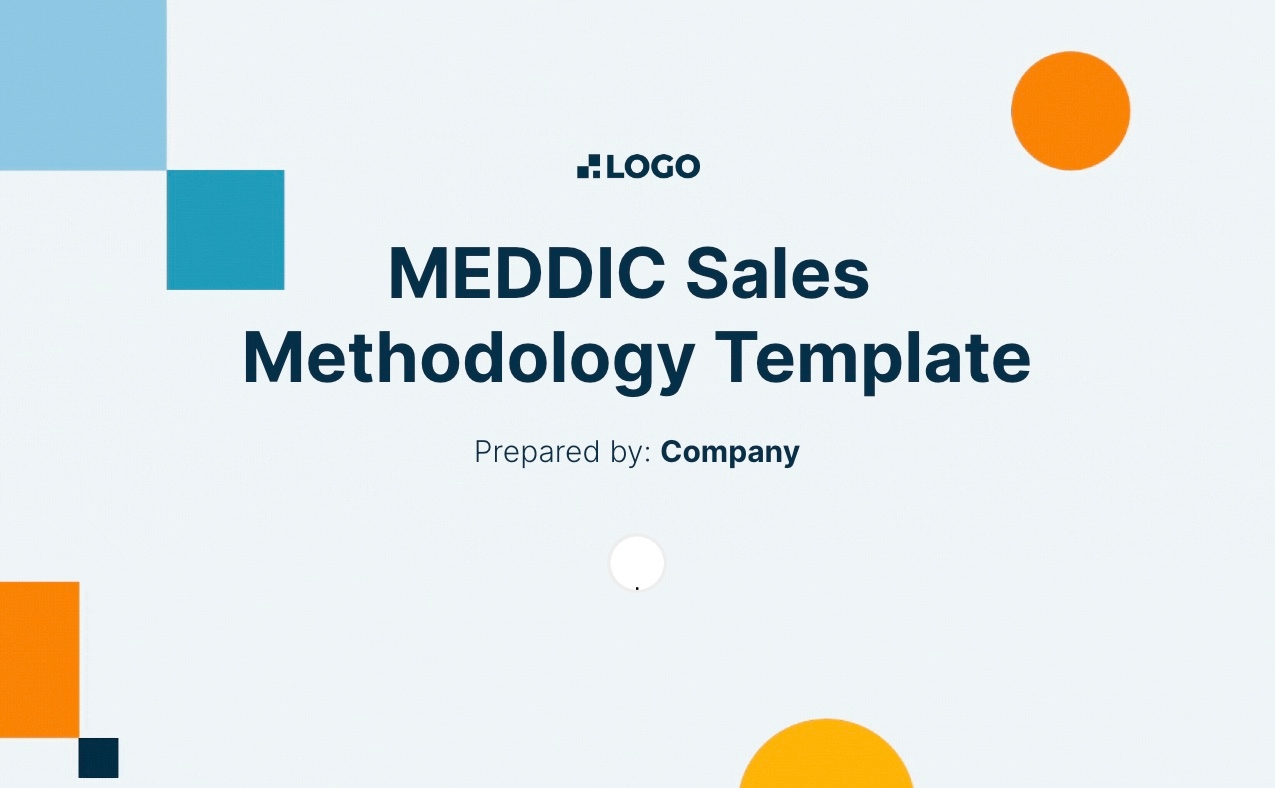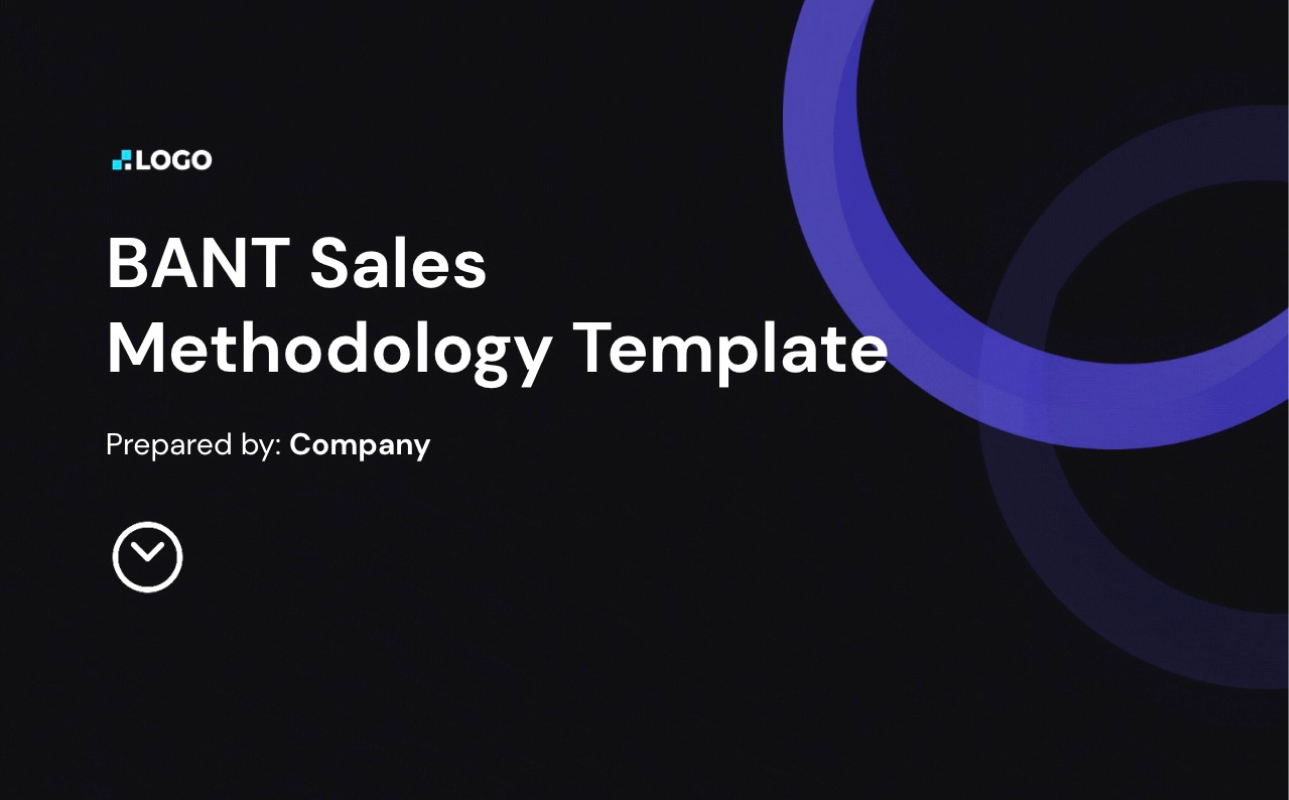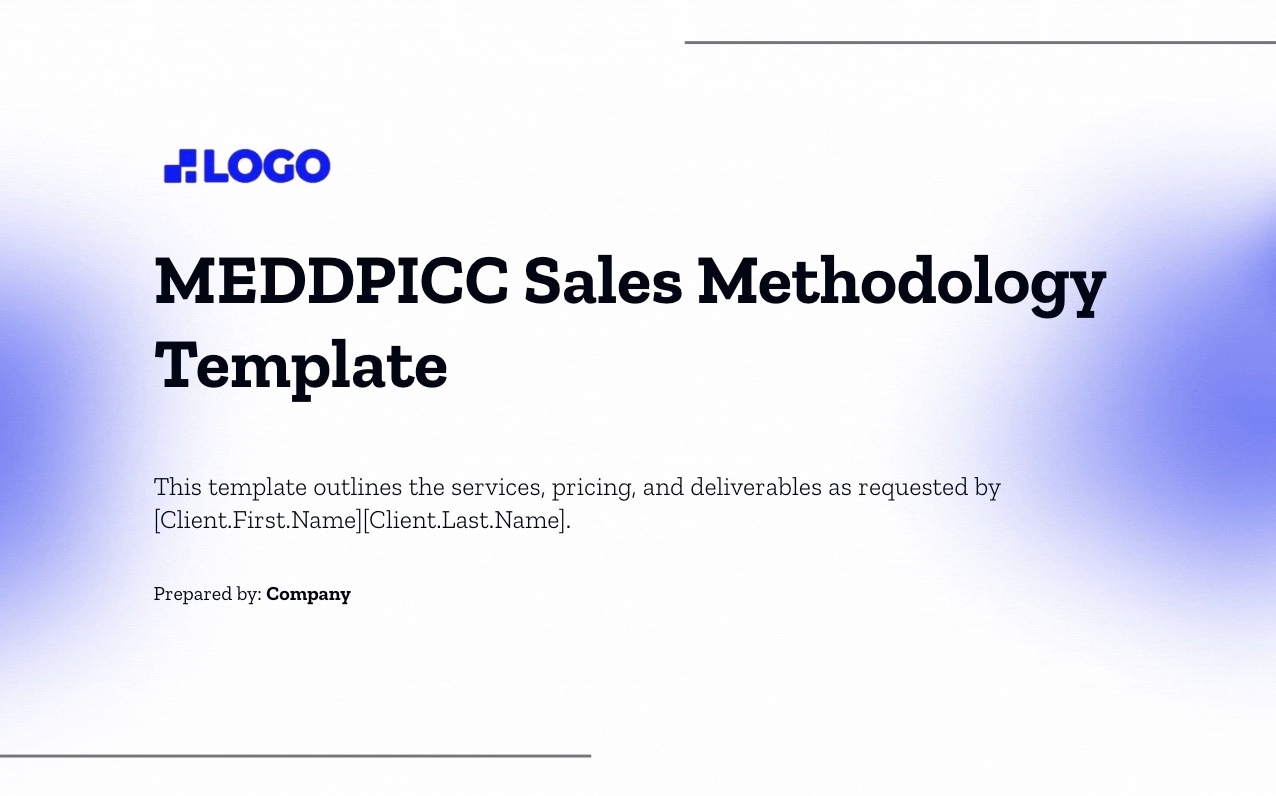Sandler Sales Template
Boost your sales performance following the Sandler methodology – create an effective, persuasive, and professional pitch to win high ticket customers.
About this template
Empower your sales team to ask the right questions and build relationships with prospects using our interactive Sandler Sales template. Our Sandler Sales template breaks down this age-old sales technique, encouraging your sales representatives to take a consultative approach to better qualify prospects.
What's included?
- Overview
- Executive summary
- Mutual action plan
- Procurement & security critiera
- How we can help
- What makes us different
- Costing
- ROI calculation
- Testimonials
Sandler Sales was initially developed by David Sandler in 1967 to overcome what Sandler refers to as the “buyer-seller” dance. The Sandler Sales methodology can be broken down into three easy-to-follow stages.
- Build the relationship: Establish a rapport with the prospect based on open and honest communication.
- Qualify the opportunity: Is the prospect a good fit for your products or services?
- Close the Sale: Simply put, get the deal done and sign the relevant paperwork.
The Sandler Sales methodology breaks down these three stages into seven steps sales reps can follow for successful selling: Build a rapport, Set Expectations, Identify Pain Points, Establish Budget, Identify Decision-Makers, Fulfillment, and Post-Sale Follow Up. The goal of Sandler Sales training is ultimately to bridge the gap between sales representatives and prospects, encouraging them to work together towards a common goal.
Sandler Sales is among the most commonly used sales methodologies and is largely industry agnostic. This sales methodology is particularly effective for B2B companies looking to offer value to each prospect. That being said, any sales team can implement the Sandler Sales methodology provided they are willing to take the time and offer prospects a more personalized approach.
The Sandler Sales methodology is a great way to eliminate uncertainty and ambiguity from sales calls, working alongside prospects to better understand potential pain points. Sandler Sales training is also particularly ideal for streamlining extended sales cycles thanks to its seven-step system.
There are a number of benefits to using the Sandler Sales methodology. For one, this sales technique helps your sales team establish a connection with prospects to better understand their pain points before proposing a solution. This, in turn, leads to a relationship based on trust and credibility.
Our mobile-friendly Sandler Sales template breaks down each step of this age-old sales methodology and can help you monitor buyer engagement with Qwilr analytics. This Sandler Sales template can be customized based on your prospect’s business needs, helping your sales team overcome obstacles and client objections. Our Sandler Sales template ultimately ensures your team can better qualify prospects with a seven-step framework.
This template will help your sales team forge meaningful relationships with clients based on trust and credibility, qualifying prospects with ease. You can also book a demo if you are looking to get started with Qwilr!
- Create an easy-to-follow seven-step Sandler Sales framework
- Align multiple stakeholders within one, mobile-friendly and interactive document.
- Monitor buyer engagement and track every click through Qwilr analytics
- Identify Sandler Sales questions to build trust and credibility with leads
- Empower your sales team to act as consultants
- Focus sales conversations on prospects that are qualified (i.e. higher motivation to buy)
- Simplify the buying experience by organizing all pertinent information in one interactive document
- Ability to embed further sales collateral, like videos or spreadsheets – avoid attachments and links getting lost in email chains.
- Guide buyers through the sales process
- Embed security and compliance information for a safe, streamlined, and reliable sales process
A tool packed with features
Brand control
Establish your brand settings once and automatically apply to every piece of collateral.
Payments
Collect payments instantly from customers with Stripe or direct to your own payment system.
Security & GDPR
Add security features like password protection and link expiry to protect sensitive content.
Embedded content
Add Calendly links, videos, surveys, Looms, GIFs and more to every page.
E-signature
Get deals signed on the spot with built-in e-signing ability.
Asset library
Create a library of reusable content for sales reps.
ROI calculator
Showcase your value with an interactive ROI calculator embedded in your Qwilr pages.
Team management
Set up permissions so your team accesses only what they need.
Interactive pricing
Empower buyers with interactive pricing plans and quotes.
Templates for every use case
Explore templates for sales, marketing, customer success, sales enablement and more.
Explore sales process templatesFrequently asked questions
The Sandler Sales methodology is centered around getting sales representatives to ask leads the right questions, acting as a consultant rather than a salesperson. In doing so, the focus of the sales call is on building a relationship with the customer based on trust and credibility, overcoming obstacles and buyer objections as they come up.
The emphasis of the Sandler Sales methodology is on the qualification stage, helping sales representatives better understand a client’s needs before offering a solution. If a lead is deemed to be unqualified, sales teams can refocus their efforts elsewhere. When properly implemented, the Sandler Sales methodology is proven to improve key sales metrics, including deal size, profit margin, and streamlining the sales cycle.
Sales representatives must ask a series of questions to qualify leads, ensuring they are the right fit for their products and services. Sandler sales questions can be broken down for each step of the sales process. Here are examples of Sandler Sales questions.
Build Rapport:
- Would it make sense to start by telling me what’s your biggest challenge with ‘Problem X’?
- What’s been your experience working with similar vendors in the past?
-
Setting an upfront contact
We’d be happy to sign an NDA so you can speak openly about Problem X – would this be of interest?
Pain points:
How is this issue impacting your business? Where do you see the biggest need for improvement? How serious would you say the issue is right now? Budget:
- What is your budget for this solution?
- Who in your business would need to be involved in the implementation to ensure it’s successful?
- Who controls the budget for this kind of issue?
Decision-making process:
- Could you share what the approval process has looked like in the past for decisions like this?
- Is there anyone else we should involve in this process?
Propose solutions:
- Do you already have a view on what your ideal solution would look like?
How would your business change if we were able to implement a solution that solved Problem X?
Next steps:
- When would be the best time to talk next about this issue?
- Is there anything you need from me before moving forward?
The Sandler Sales methodology has established itself as one of the most prominent sales techniques since its inception over 50 years ago. Today, this age-old sales method is still used by sales teams of all sizes. In fact, studies have shown that 88% of sales people with Sandler Sales training said their sales strategy has improved.
The Sandler Sales methodology is particularly effective at qualifying leads, ensuring sales representatives are focusing their efforts on prospects that are best suited to their products or services.
The Sandler Sales methodology is a seven-step consultative selling approach, helping sales representatives qualify leads with the right questions. Here are the seven steps to the Sandler Sales methodology.
Establishing a rapport: Establish a bond with the prospect based on open and honest communication.
Setting an upfront contact: Set expectations and ground rules to create a comfortable environment to do business.
Identify pain points: Establish pain points to better qualify the lead.
Establish a lead’s budget: Simply put, how much time and money is the lead willing to invest in this solution?
Identify the lead’s decision-making process: Identify which party is tasked with making the final decision along with their timeline.
Propose solutions: Propose products and services that align with the lead’s budget and desired timeline.
Establish next steps: Identify the next steps to complete the sale to avoid competition and buyer’s remorse.
The Sandler Sales methodology is designed to put the buyer first and build a strong relationship with them before proposing any products or solutions. Rather than challenging the prospect, similarly to the Challenger Sales methodology, Sandler Sales training encourages sales representatives to be on the same team as their prospects.
In fact, sales representatives using the Sandler Sales methodology act more so as consultants instead of salespeople. This helps sales teams build trust with prospects before positioning their products and services. Another key distinction between the Sandler Sales methodology and other sales techniques is the level of persistence. Sandler Sales training eliminates the need for high-pressure tactics, asking sales reps to become de facto advisors.

